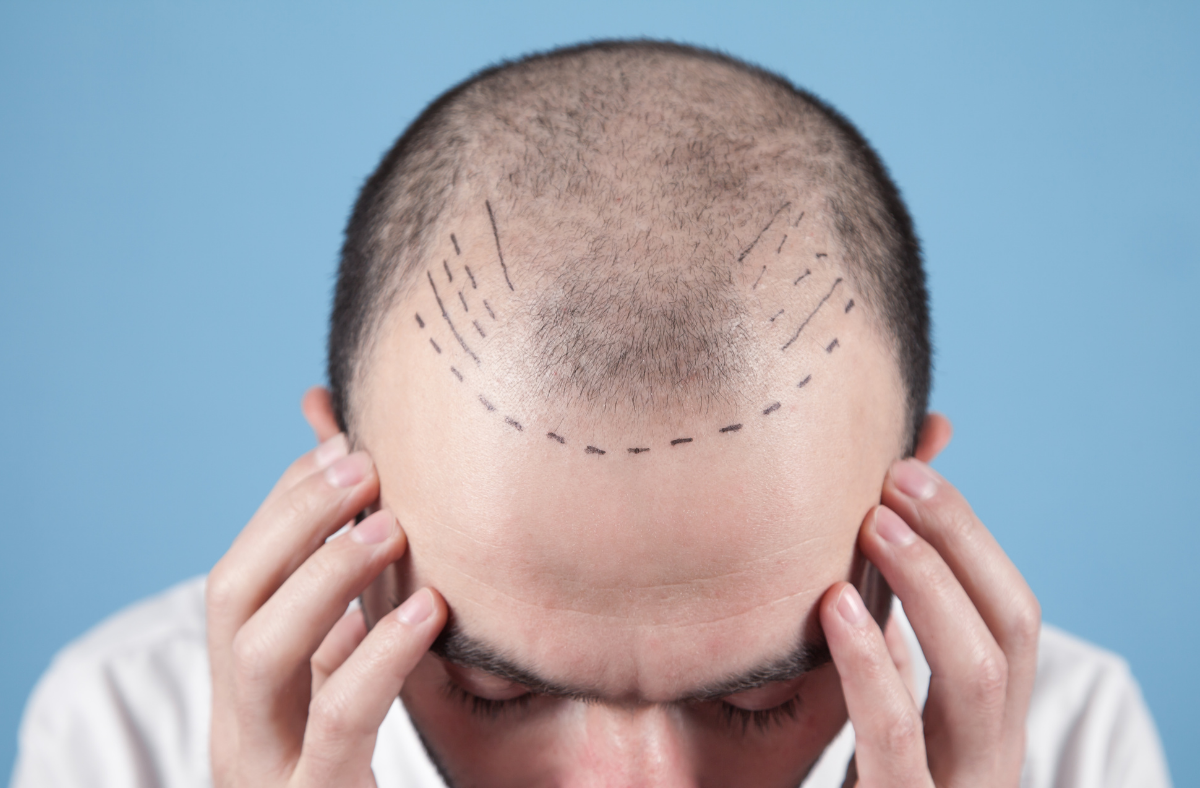Hair transplants involve a surgical procedure where hair is removed from the back of your head and transplanted to the front, top or crown. If you look at a bald man, they generally keep the hair on the sides and back of their head. That hair is “formulated” differently from the hair in front or on top, and therefore when transplanted, generally stays and recurring hair regrowth is almost automatic. That hair does not really recognize that it in a different spot on your head and continues to grow normally. If hair loss occurs in the transplanted areas, it could be a result of scalp trauma or the original non-transplanted hair reacting to DHT in the scalp.
Types of Hair Transplants
There are three methods of transplantation: mini-graft, FUE and the plug method. The plug method is an obsolete method not used often today. A physician literally removes a plug of hair from the back of the head which may have 15 or more hairs in it and that entire plug is transplanted to the front. The hair roots and generally over time it will grow normally. Over time, often these patients appear to have a “baby doll” unnatural hair line. This method was more commonplace thirty years ago and is seldom used.
Mini-Graft
The mini or micro graft method is a procedure whereby a physician removes a strip of hair from the back of the patients head and that graft is cut into mini and micro grafts. The mini grafts may have three or four or five hairs and are good for the center of the head. The micro grafts have one or two hairs and are used primarily for the front hairline. Skilled technicians separate the hairs in specific sections of mini and micro grafts so the physician knows what graft to place in what section of the patients scalp. This procedure is commonplace today.
FUE
Follicular Unit Extraction (FUE) is a minimally invasive hair transplant surgery that involves extracting individual hair follicles from the donor area and transplanting them to the balding or thinning areas of the scalp. Unlike traditional hair transplant surgery, which involves removing a strip of hair from the donor area, FUE uses a small punch tool to remove individual hair follicles one by one.
FUE is a precise and meticulous procedure that requires a skilled and experienced hair restoration specialist. The procedure begins with the shaving of the donor area, typically the back of the scalp, where the hair follicles are the healthiest and most resistant to balding. The specialist then uses a small punch tool to remove individual hair follicles from the donor area, which are then transplanted to the recipient area using a micro-needle.
FUE or follicular unit extraction is where the transplant may be assisted by a computed and the hair removal and placement is done with one or two hairs at a time from extraction to placement. The benefit of this method is there is little or no scarring and the area of hair “harvestation” is much larger. This is, however, the most expensive method of hair transplant surgery and requires a skilled technician for extraction and placement. The hair grows normally and the patient may return for a second surgery to increase the density of the transplanted hair.
Choosing Hair Transplantation
Transplants are not for everyone. Some people are simply too bald all over to be a good candidate. Patients with alopecia are not candidates. Often there simply isn’t enough hair to move around the head to show adequate density and maintain good density in the harvested area. Think carefully about your finished hairstyle, density, length, donor area density, and age when considering this surgery. It can work but sometimes you may be better off with a non-surgical solution.
However, for many, a Maryland hair transplant surgery is a popular and effective way to restore natural hair growth for individuals experiencing hair loss or balding. Here are some common reasons why people choose to get a hair transplant:
- Androgenetic Alopecia: This is the most common type of hair loss, which is often referred to as male or female pattern baldness. Hair transplant surgery can be an effective solution for those experiencing hair loss due to androgenetic alopecia.
- Scarring Alopecia: Scarring alopecia is a type of hair loss caused by scarring on the scalp. Hair transplant surgery can be a viable option for individuals with scarring alopecia who have lost hair follicles in the affected area.
- Trauma or Injury: Trauma or injury to the scalp, such as burns or injuries, can cause hair loss in the affected area. Hair transplant surgery can be a viable option for individuals who have experienced hair loss due to trauma or injury.
- Hair Thinning: Hair transplant surgery can be an effective solution for individuals with thinning hair who want to restore a fuller and thicker head of hair.
- Self-Confidence: Many individuals choose to get a hair transplant to improve their self-confidence and overall quality of life. Restoring natural hair growth can improve one’s appearance and self-esteem.
- Genetics: Hair loss can be hereditary, and some individuals may choose to get a hair transplant as a preventative measure to maintain a full head of hair.
Overall, hair transplant surgery is a safe and effective solution for those seeking to restore their natural hair growth. It is an accessible option for many men and women who want to work with a hair loss doctor. Hair transplant cost depends on a number of factors and will vary based on your needs. It’s important to consult with a hair restoration specialist to determine if hair transplant surgery is the best course of treatment based on individual budget and goals.
Contact Us
If you are interested in hair regrowth for thinning hair, a Baltimore hair transplant may be right for you. Contact Eldorado or call (410) 931-3399 to learn about your options and schedule a free hair analysis now.




